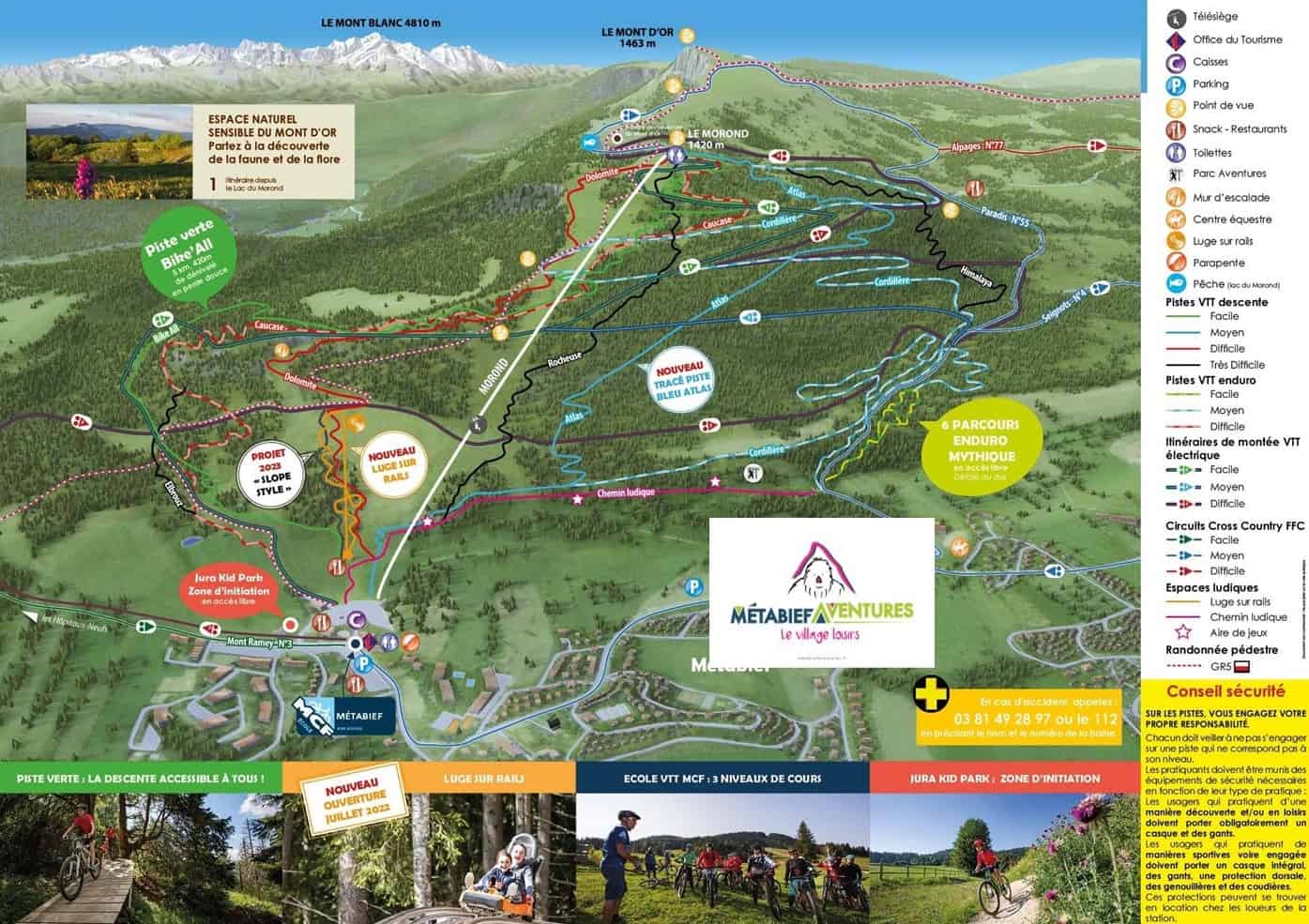One of the Partners in the BeyondSnow project is the renowned Métabief ski resort, situated between 900 and 1410 meters in altitude and accounting for approximately 50% of the tourism economy in the Haut-Doubs region, home to about 65,000 individuals.
The social function of the resort is crucial in maintaining the sporting spirit of the area, which is oriented towards snow activities and upheld by numerous Olympic champions in biathlon and Nordic combined events. Métabief offers high-quality leisure services and, thanks to tourism-related effects (overnight stays), ensures a good balance between public finances and private revenues.
However, this relatively well-balanced structure is threatened by global warming and biodiversity loss. Since the early 2000s, there has been a drastic increase in temperatures, resulting in fewer days suitable for skiing, both on natural and artificial snow. Moreover, climate change has made the environment more unpredictable, with strong winds often preventing the use of artificial snow in certain areas of the ski resort.
In the face of these changes, the management of Métabief foresees the end of skiing between the years 2030 and 2040 and has decided to adopt a plan to transform the ski resort into a mountain station, including a Mountain Hub that will serve as a centre for meetings, resources and training to envision new outdoor offerings in the mountains that respect biodiversity and other human activities such as agriculture and forestry.
To lead this transformation process, the Syndicat Mixte du Mont d’Or (SMMO) has reviewed the organization of the teams that operate the Métabief resort. This public governance, made up of local elected officials, has succeeded in financing an engineering service dedicated to the transition.
Métabief is a unique pilot site because it is introducing an innovative approach to collaboration engineering at the Haut-Doubs level, using original methods in anticipation of a future with less or no snow. These methods include project and planning engineering, facilitating collective intelligence (through co-development, shared governance, design thinking), and adopting a systemic approach to complexity (modeling, experimentation, observation, adaptation).
The main challenge for Métabief is to create communities of actors capable of learning to work together and inventing new offerings so that the potential end of alpine skiing in the area by 2030 does not mean the end of the tourism economy and leisure activities in Haut-Doubs.
An analysis tool called the CLIMSNOW model (Météo France/INRAE) provided an overview of the current situation in 2020. On average, only 30% of the ski areas in ski resorts are usable for a mere 60 days per year. Additionally, in one out of five seasons, the total duration of the skiing season is less than 80 days. These data highlight the need to adapt and find solutions to prolong the skiing activity as much as possible.
Among the proposed measures to reduce the impact of climate change is the idea of offering 60 days of skiing on 30% of the total area and 80 days on the remaining area. This would comply with the OECD criteria for ski resort sustainability, which require at least 100 operating days. The use of artificial snow is being employed to buy time for a gradual transition, but this model is already showing signs of unsustainability, which can only be resolved through financial support from local authorities.
To address this challenge, various adaptation measures are being implemented, including multi-year maintenance plans (subsidized by 80% from the Department) and investments in the technical skills of employees to maintain and optimize existing infrastructure rather than investing in new facilities. Additionally, the use of artificial snow and sufficient water availability, along with community contributions to finance investment costs and periods of low precipitation, could ensure the sustainability of the skiing activity.
However, adaptation is not solely focused on skiing. Efforts are being made to optimize the use of non-skiing-related infrastructure. For example, in Métabief, the development is being concentrated on activities such as rail sledding, mountain biking trails, a mountain biking school, and a leisure village with tree-top courses, buoys, and an aerial course. This would diversify tourism activities and balance the decline in skiing.
Another development possibility lies in outdoor activities on the Mont d’Or Massif, such as hiking, mountain biking, paragliding, trail running, and nature discovery. However, there are challenges to overcome, such as involving professionals to promote these activities and integrating them into the environmental context of the Mont d’Or Massif while respecting biodiversity, agriculture, forestry, and hunting.
Despite the anticipated end of alpine skiing, the mountains remain attractive to many people, especially after the health crisis, which has intensified the desire for contact with nature. However, it is important to recognize that this growing influx can lead to conflicts between different activities and interests, as highlighted by a 2021 study in Social and Environmental Psychology. Therefore, finding a balance between enjoying the mountains and safeguarding the environment and other human activities is crucial.
Another initiative to adapt to climate change involves the creation of a mountain hub that functions as an energy-positive building. This project also entails demolishing five energy-consuming buildings that rely on fossil fuels. Measures for solar energy production, reducing the building’s environmental footprint at the entrance of the ski resort, and creating a space that brings together all the tourism operators in the area are being implemented.
To guide this transition process, the approach of cooperation engineering is being adopted. This approach recognizes the complexity of the system and aims to create learning organizations capable of adapting and developing a regenerative tourism economy. The masterplan is a key tool in this process, involving cooperation among various actors and combining planning and emergent processes based on collective intelligence.
The future of alpine ski resorts requires a paradigm shift. With an increasingly complex and uncertain world, it is crucial to learn to continuously adapt to changes. The masterplan proposes a vision for 2040, emphasizing cooperation, the protection of natural heritage as a common good, and the optimization of space, materials, and energy consumption. Cooperation among local actors and the creation of a shared vision for the future are essential elements in guiding the transformation process.
While the potential end of skiing may pose a significant shock for individuals and organizations, it is important to address resistance to change and work together to find sustainable solutions. The masterplan provides a framework for creating communities of actors working together on specific projects, promoting a transition to a regenerative and sustainable economy for the Haut-Doubs region.



